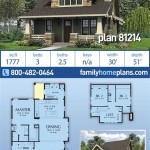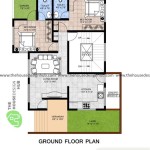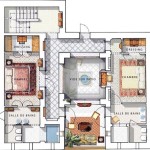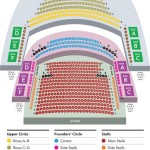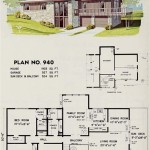Understanding House Plans, Elevations, and Sections
The construction and design of any building, especially a house, relies heavily on a set of detailed drawings known as house plans. These plans are not just aesthetic representations; they are comprehensive documents that convey the building's layout, dimensions, materials, and structural details to architects, engineers, contractors, and builders. A complete set of house plans typically includes floor plans, elevations, and sections, each providing a unique perspective and crucial information about the building's design and construction. A thorough understanding of these elements is essential for anyone involved in the building process, from the initial planning stages to the final construction phase.
House plans serve as the primary blueprint for construction. They are drawn to scale and provide a top-down view of each floor, detailing the layout of rooms, hallways, staircases, and other features. Accompanying the floor plans are elevations and sections, which offer supplementary views that clarify the building's external appearance and internal structure. These drawings collectively ensure that the building is constructed according to the intended design, meets all relevant building codes and standards, and functions as intended for its occupants.
The accuracy and completeness of house plans are paramount. Errors or omissions can lead to costly mistakes during construction, delays in the project timeline, and potential safety hazards. Therefore, engaging qualified professionals, such as architects and structural engineers, is crucial to developing comprehensive and accurate plans. This ensures that all aspects of the building's design and construction are thoroughly considered and properly documented.
Key Point 1: The Anatomy of a Floor Plan
The floor plan is arguably the most fundamental component of a set of house plans. It presents a bird's-eye view of each level of the house, as if the building were sliced horizontally at a specific height. It depicts the arrangement of rooms, hallways, doors, windows, and other architectural features. The floor plan must accurately represent the dimensions of each room, the thickness of walls, and the placement of fixtures and appliances. Precise dimensions are essential for accurate material estimation and construction.
Beyond simply showing the layout, a floor plan also includes notations and symbols that provide additional information. These symbols indicate the location of electrical outlets, switches, lighting fixtures, plumbing fixtures, and other essential building components. The floor plan utilizes a standardized set of conventions for representing these elements, ensuring that all parties involved in the project can accurately interpret the information. Schedules, such as door and window schedules, are often attached to the floor plan, providing specifications for each item, including size, material, and hardware.
Furthermore, floor plans often indicate the intended use of each room. Clear labeling helps to identify the purpose of different spaces, such as bedrooms, bathrooms, kitchens, living rooms, and dining areas. This is crucial for understanding the overall functionality of the house and how the various spaces relate to one another. The floor plan also needs to adhere to building codes and accessibility regulations, ensuring that the design meets all requirements for safety, egress, and accessibility for people with disabilities.
Modern software has revolutionized the creation and interpretation of floor plans. Computer-aided design (CAD) programs allow architects to create detailed and accurate drawings with ease. These programs also offer features for 3D modeling, allowing clients to visualize the finished product before construction begins. Digital floor plans are easily shared and modified, facilitating collaboration among the design team and the construction crew.
Key Point 2: Understanding Elevations: Exterior Views
Elevations are orthographic projections that show the exterior views of a building. They represent the appearance of the house from each of its sides, typically labeled as front, rear, left, and right elevations. Unlike floor plans, which provide a top-down view, elevations show the vertical aspects of the building, including the roofline, windows, doors, siding, and other exterior details. Elevations are crucial for visualizing the overall aesthetic of the house and how it will appear in its surroundings.
The elevations provide essential information about the materials used on the exterior of the house. They indicate the type of siding, roofing materials, and trim details. This information is crucial for estimating the cost of materials and for ensuring that the building is constructed according to the intended design. The dimensions of windows and doors are also indicated on the elevations, along with their placement and style. This information is particularly important for ordering these components and for ensuring that they fit properly within the building's structure.
Elevations also play a significant role in ensuring that the house is aesthetically pleasing and that it fits in with the surrounding neighborhood. They show the relationship between the house and the site, including the grade level and any landscaping features. Architects use elevations to coordinate the exterior design elements and to ensure that the overall appearance of the house is harmonious. They also consider factors such as sunlight and shadow patterns, to ensure that the house looks its best at different times of the day.
Furthermore, elevations are important for obtaining building permits. Local authorities often require elevations to be submitted as part of the permit application process. These drawings help to ensure that the proposed building complies with local zoning regulations and that it meets all relevant building codes. The elevations also provide a visual representation of the building, which can be used to assess its impact on the surrounding environment.
Key Point 3: Sections Reveal Internal Structure
Sections are drawings that show a vertical cut through the building, revealing its internal structure. They provide a view of the interior of the house, as if it were sliced in half along a specific plane. Sections are essential for understanding the relationship between different parts of the building, such as the foundation, walls, floors, and roof. They also show the internal components of the building, such as framing members, insulation, and mechanical systems.
Sections are particularly useful for understanding the structural integrity of the building. They show how the various components of the building are connected and how they work together to support the weight of the structure. This information is crucial for ensuring that the building is structurally sound and that it can withstand the forces of nature, such as wind and earthquakes. Sections also provide information about the materials used in the construction of the building, such as the type of wood used for framing and the type of insulation used in the walls and roof.
In addition to showing the structural components of the building, sections also provide information about the mechanical systems, such as plumbing, electrical, and HVAC systems. They show the location of pipes, ducts, and wires, and they indicate how these systems are connected. This information is essential for coordinating the installation of these systems and for ensuring that they function properly. Sections also provide information about the fireproofing and soundproofing of the building.
There are typically two types of sections: building sections and wall sections. Building sections show the overall structure of the building, while wall sections provide a more detailed view of the construction of a particular wall. Wall sections typically show the layers of materials that make up the wall, such as siding, sheathing, insulation, and drywall. They also show the location of studs, headers, and other framing members. These detailed views are necessary for ensuring that the wall is properly constructed and that it meets all relevant building codes.
Understanding sections is crucial for ensuring that the building is constructed according to the intended design and that it meets all relevant building codes and standards. Sections provide a comprehensive view of the building's internal structure, which is essential for understanding how the building works and for ensuring that it is safe and durable.
In summary, house plans, elevations, and sections are indispensable tools in the design and construction of any building. They provide a comprehensive view of the building's layout, exterior appearance, and internal structure. By understanding these drawings, architects, engineers, contractors, and builders can ensure that the building is constructed according to the intended design, meets all relevant building codes and standards, and functions as intended for its occupants. A detailed and accurate set of house plans is essential for a successful building project.

Pin On Quick Saves

I Ll Draw 2d Floor Plan Section Elevation In Autocad And Revit For 30 Freelancer Ekundayo Rilwan Realoneconsult Kwork

Ground Floor Plan Of The House With Elevation And Section In Autocad Which Provide Detail Front S Plans

Construction Plan Drawings Elevation Cross Section And Ground Scientific Diagram

Draw Architectural Floor Plans Elevations And Sections By Cadman Sl Fiverr

The Plan Layout Elevation And Section Of A Traditional House Complex Scientific Diagram

Pent House Sectional Elevations Cadbull

Floor Plan Elevation Sample House Plans Building
Floor Plans Elevations Sections And Details Upwork

Relationship Of Plan Elevation And Section Archi Monarch

